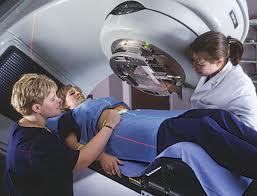by
Brendon Nafziger, DOTmed News Associate Editor | December 14, 2010
Researchers say combining SPECT with CT scans can help doctors find and protect lymph nodes during radiation treatment for breast cancer.
In a small study presented at the San Antonio Breast Cancer Symposium on Saturday, Mayo Clinic scientists said combining the two modalities could help reduce the number of lymph nodes exposed to radiation by almost half.
Lymphedema, a painful swelling of the lymphatic tissue, can happen when the lymph nodes become victims of collateral damage when breast tumors are zapped with radiation or breast tissue is removed during surgery. The researchers, led by Dr. Andrea L. Cheville, a professor of medicine with Mayo in Rochester, Minn., estimate that up to 70 percent of breast cancer survivors suffer from this condition.



Ad Statistics
Times Displayed: 1227
Times Visited: 6 Fast-moving cardiac structures have a big impact on imaging. Fujifilm’s SCENARIA View premium performance CT brings solutions to address motion in Coronary CTA while delivering unique dose saving and workflow increasing benefits.
According to their presentation, the researchers developed a treatment plan using SPECT and CT imaging which identified relevant, healthy lymph nodes, which drain the arm after surgery, in 22 patients. After detecting them with the scans, the researchers could then shield the lymph nodes from radiation damage.
Of the 53 draining lymph nodes identified, more than half (54 percent) would have been irradiated in standard treatment planning but spared if spotted and protected after SPECT-CT scans, the doctors said.
Also, more healthy lymph nodes in the standard treatment plans got bigger doses. In the study, 62 percent of lymph nodes in the standard plan would receive, on average, more than 10 Gy, compared with only 17 percent of nodes in the SPECT-CT plans.

